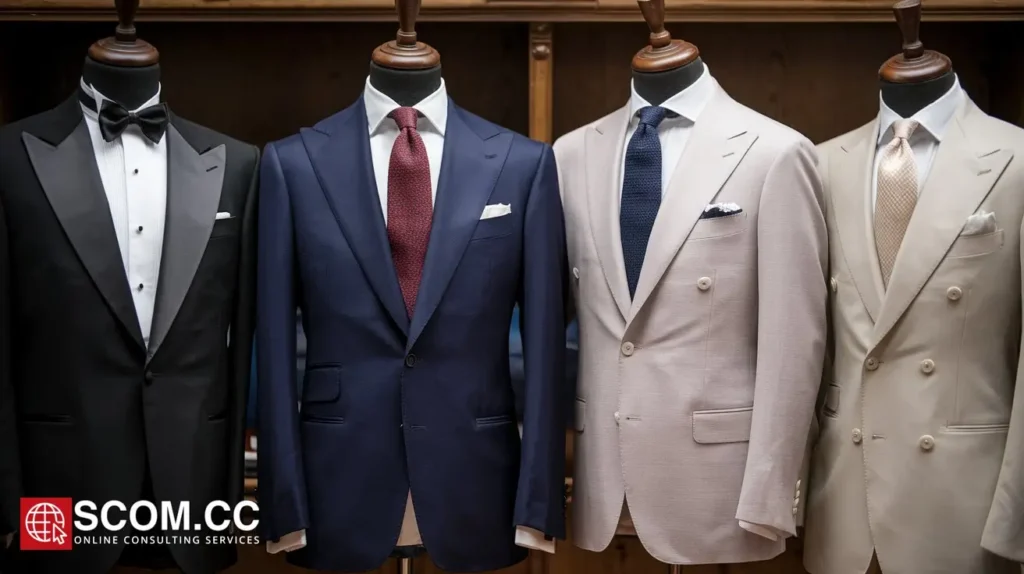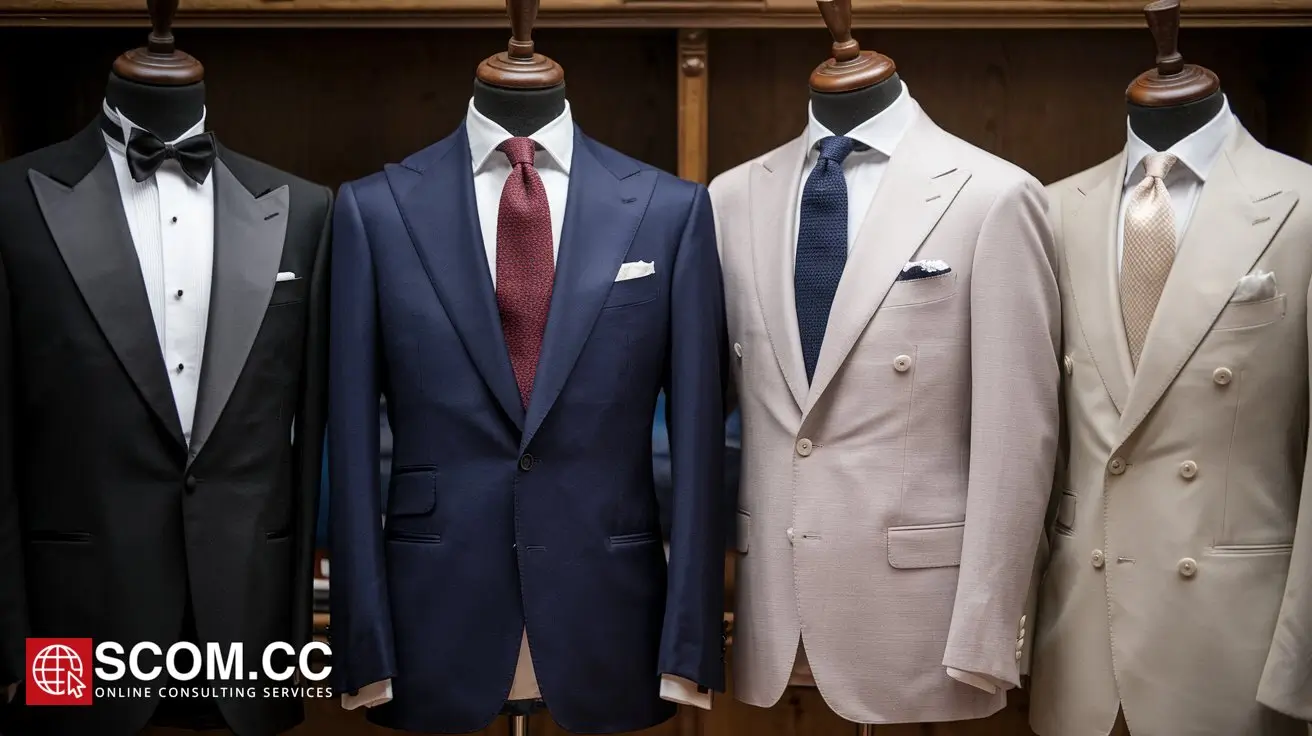How to Choose a Suit for a Formal Event vs. Casual Wear

- How to Choose a Suit for a Formal Event vs. Casual Wear
- Choosing a Suit for Formal Events
- Choosing a Suit for Casual Wear
- Conclusion
-
FAQ
- 1. What is the difference between black-tie and white-tie formal wear?
- 2. Can I wear a suit with a pattern to a formal event?
- 3. What type of shoes should I wear with a black-tie suit?
- 4. Are there any color restrictions for casual suits?
- 5. What fabric is best for a casual suit in warm weather?
- 6. Can I wear a bow tie to a casual event?
- 7. How important is tailoring for a suit?
How to Choose a Suit for a Formal Event vs. Casual Wear
Selecting the right suit can significantly impact your appearance and confidence, whether you're attending a formal event or a casual gathering. Understanding the nuances of suit selection for different occasions is crucial for achieving the appropriate look. This guide will provide you with detailed insights on how to choose a suit for both formal events and casual wear, ensuring you make the best impression in any setting.
Choosing a Suit for Formal Events
Formal events demand a level of sophistication and adherence to traditional style. The choice of suit, fabric, and accessories should align with the formality of the occasion.
1. Understanding Formal Attire
Formal attire typically includes black-tie or white-tie dress codes. Black-tie events are less strict than white-tie but still require a high level of formality. Here's a breakdown of each:
Black-Tie Events
- Suit Type: Opt for a classic black tuxedo. The tuxedo should feature a satin or grosgrain lapel for an added touch of elegance.
- Shirt: Wear a white dress shirt with a stiff collar. A pleated front is traditional but not always necessary.
- Bow Tie: A black silk bow tie is essential. Pre-tied bow ties can be convenient but a self-tie bow tie is more traditional.
- Accessories: Include cufflinks, black patent leather shoes, and a black formal belt or suspenders.
White-Tie Events
- Suit Type: Choose a white tailcoat with black trousers. The tailcoat should have a high, cutaway front with a white vest underneath.
- Shirt: A white wing-collar dress shirt with studs is required.
- Bow Tie: A white silk bow tie to match the tailcoat.
- Accessories: Include white gloves, cufflinks, patent leather shoes, and a black formal belt or suspenders.
2. Fabric and Fit
For both black-tie and white-tie events, the fabric should be high-quality wool or a blend of wool and silk. The fit should be tailored to ensure a sleek, polished look. Pay attention to the jacket’s shoulders, chest, and waist to avoid any loose or baggy areas.
3. Color and Patterns
Stick to classic colors like black, navy, or dark gray for formal events. Avoid patterns; a solid color maintains the level of formality required.
Choosing a Suit for Casual Wear
Casual suits offer more flexibility in terms of color, fabric, and style. The key is to balance comfort with style.
1. Understanding Casual Attire
Casual suits can range from smart-casual to business-casual. The aim is to look polished without the rigidity of formal wear.
Smart-Casual Suits
- Suit Type: Choose a blazer and chinos combination or a lightweight suit in a relaxed fit.
- Shirt: A button-down shirt in a variety of colors or patterns. Pastel shades or subtle patterns can work well.
- Accessories: Leather loafers or derby shoes, and matching belt. Casual watches or bracelets can add a personal touch.
Business-Casual Suits
- Suit Type: Opt for a two-piece suit in a lighter color like gray or blue. Unstructured blazers work well for a more relaxed look.
- Shirt: Dress shirts in solid colors or light patterns. Consider oxford cloth for a more casual texture.
- Accessories: Dress shoes or loafers and a simple leather belt. Accessories should be minimal; a classic watch is sufficient.
2. Fabric and Fit
Casual suits can be made from lighter fabrics like cotton, linen, or blends. These materials are breathable and suitable for various weather conditions. The fit should be comfortable, allowing for movement while maintaining a tailored appearance.
3. Color and Patterns
For casual wear, explore a broader palette of colors, including earth tones, pastels, and bold hues. Patterns such as checks, stripes, or plaids are acceptable and can add interest to the outfit.
Conclusion
Choosing the right suit for a formal event versus casual wear involves understanding the specific dress codes and adapting your selections accordingly. For formal events, adhere to traditional styles with classic colors and fabrics. For casual wear, embrace versatility with more relaxed fabrics and colors, while maintaining a polished appearance. By considering these guidelines, you can ensure that you are appropriately dressed for any occasion, reflecting both your style and the event's requirements.
Suit Selection Summary Table
| Criteria | Formal Events | Casual Wear |
|---|---|---|
| Type of Suit | Black tuxedo or white tailcoat | Blazer and chinos or lightweight suit |
| Shirt | White dress shirt, pleated front (black-tie) | Button-down shirt, solid or patterned |
| Bow Tie | Black silk (black-tie), white silk (white-tie) | Not required |
| Accessories | Cufflinks, black patent leather shoes, belt/suspenders | Leather loafers/derby shoes, casual belt, simple watch |
| Fabric | High-quality wool or wool-silk blend | Cotton, linen, or blends |
| Fit | Tailored for sleek, polished look | Relaxed fit for comfort |
| Color and Patterns | Classic colors (black, navy, dark gray), solid | Broad color palette, patterns allowed |
FAQ
1. What is the difference between black-tie and white-tie formal wear?
Black-tie formal wear typically involves a black tuxedo, white dress shirt, and black bow tie. White-tie formal wear is more formal and includes a white tailcoat, white vest, and white bow tie. White-tie attire is rarely worn today and is reserved for the most formal events.
2. Can I wear a suit with a pattern to a formal event?
For formal events, it is recommended to stick to solid colors like black, navy, or dark gray. Patterns are generally avoided to maintain the formality and elegance of the attire.
3. What type of shoes should I wear with a black-tie suit?
Black patent leather shoes are the traditional choice for black-tie events. They provide a glossy finish that complements the formal nature of the suit.
4. Are there any color restrictions for casual suits?
Casual suits offer more flexibility with colors. You can choose from a wide range of colors including earth tones, pastels, and even bold hues. Patterns such as checks, stripes, and plaids are also acceptable.
5. What fabric is best for a casual suit in warm weather?
In warm weather, opt for lightweight fabrics such as cotton, linen, or blends. These materials are breathable and suitable for maintaining comfort in higher temperatures.
6. Can I wear a bow tie to a casual event?
A bow tie is generally reserved for formal events. For casual wear, a standard tie or no tie at all is more appropriate. Casual events allow for a more relaxed approach to accessories.
7. How important is tailoring for a suit?
Tailoring is crucial for both formal and casual suits. A well-tailored suit enhances your appearance by providing a perfect fit, which improves comfort and the overall look of the suit.

To explore more about tailoring, visit our Blog of Tailoring. If you have any questions or need assistance, go to our contact page. Additionally, you can find more information about tailoring and consulting at this tailoring and consulting portal.

Leave a Reply